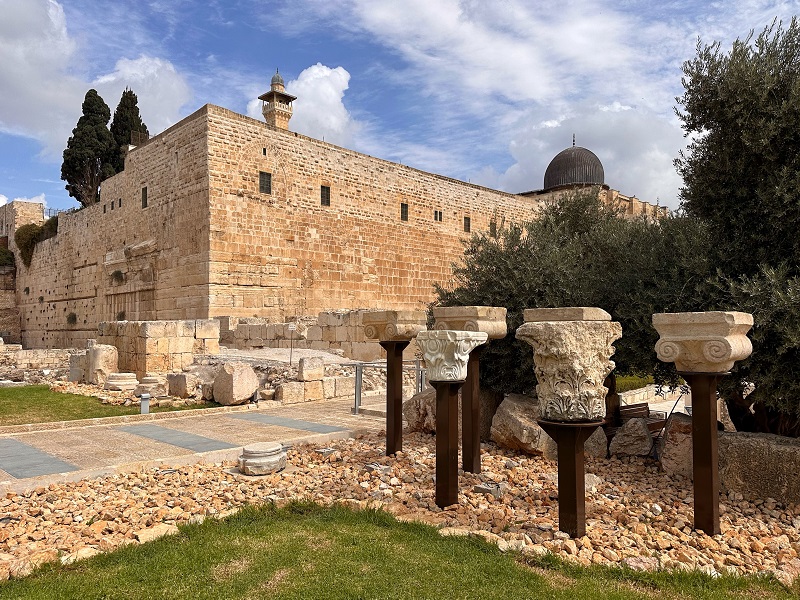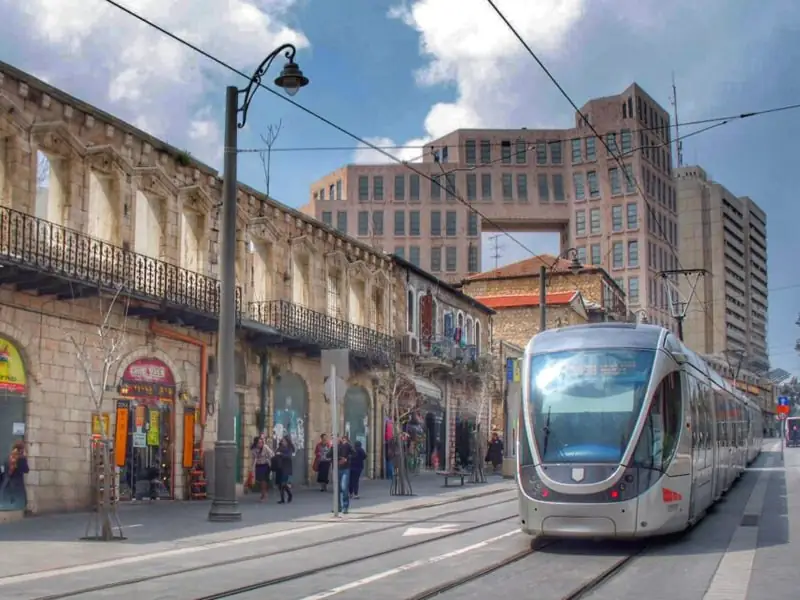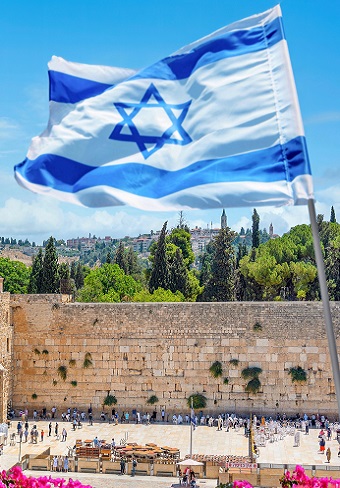Ramat Rachel Archaeological Park
Ramat Rachel archaeological park is an impressive yet enigmatic site about 3 km south of Jerusalem. It bears rich remains from several periods in antiquity, and yet its name and history are uncertain.
The History of Ramat Rachel Archaeological site
 The site is on a hilltop east of the main road between Jerusalem and Bethlehem, in the vicinity of Kibbutz Ramat Rachel. In 1930 archaeologists uncovered a burial cave at the site, but only in 1954 did large-scale excavation occur at the site, as the kibbutz wanted to build a water reservoir. The excavations found foundations of the palace from the last stages of the First Temple Period and remains of a Byzantine period monastery built over its remains centuries later.
The site is on a hilltop east of the main road between Jerusalem and Bethlehem, in the vicinity of Kibbutz Ramat Rachel. In 1930 archaeologists uncovered a burial cave at the site, but only in 1954 did large-scale excavation occur at the site, as the kibbutz wanted to build a water reservoir. The excavations found foundations of the palace from the last stages of the First Temple Period and remains of a Byzantine period monastery built over its remains centuries later.
Jehoiakim’s Palace?
Aharoni, who uncovered the palace, suggested King Jehoiakim built it. If so, perhaps this is the lavish palace Jeremiah condemed –
13 Woe to him who builds his palace by unrighteousness, his upper rooms by injustice, making his people work for nothing, not paying them for their labor. 14 He says, ‘I will build myself a great palace with spacious upper rooms.’ So he makes large windows in it, panels it with cedar and decorates it in red. (Jeremiah 22:13-14)
Additional Proposals
His academic rival, Y. Yadin, suggested an earlier date to the palace, and identified the site with “House of Baal” mentioned in 2 Kings 11:18. G. Barkai, who also excavated at the site, suggested the site is “MMST,” a placename known only from ancient inscribed jar handles. O. Liphshitz, who also excavated at the site, believes it to be an administrative center in the Assyrian, Babylonian, and Persian periods. It is also possible that the palace dates to the time of King Uziah and that he retired here when he became a leper (2 Chr. 26:21).
In 2020, architectural remains of a royal mansion from the first temple period were found halfway between Ramat Rachel and Jerusalem. The evidence suggests it was part of a smaller complex, perhaps another royal residence of King Jehoiakim.
The Monastery’s Enigma
The identity of the monastery built at the site in the Byzantine period is also still being determined. Aharoni suggested that it was part of the Kathisma church, but in the 1990s, an archaeological survey tracked the real Kathisma church 300 meters west of the site. Nevertheless, the monastery may have been part of the Kathisma church complex.
Touring Ramat Rachel Archaeological Park
The site is free of charge and accessible from kibbutz Ramat Rachel. In 2002 art works by Ran Morin were installed around the Biblical palace. Morin is also known for his environmental artwork at the eastern edge of the Kibbutz (Park of Olives).
A tour of Ramat Rachel Archaeological park can be combined with a guided day tour of Jerusalem.
Mizpe Yair
 At the western edge of the park is a beautiful lookout of western Jerusalem. Israeli artist Ran Morin designed here a round balcony around an oak tree. Next to it several military trenches from 1948 battles are still visible. The lookout was built in memory of Yair Angel, a member of Kibbutz Ramat Rachel who died in 1996 during his military service in the Israeli navy seals unit (Shayetet 13). יהי זכרו ברוך
At the western edge of the park is a beautiful lookout of western Jerusalem. Israeli artist Ran Morin designed here a round balcony around an oak tree. Next to it several military trenches from 1948 battles are still visible. The lookout was built in memory of Yair Angel, a member of Kibbutz Ramat Rachel who died in 1996 during his military service in the Israeli navy seals unit (Shayetet 13). יהי זכרו ברוך










